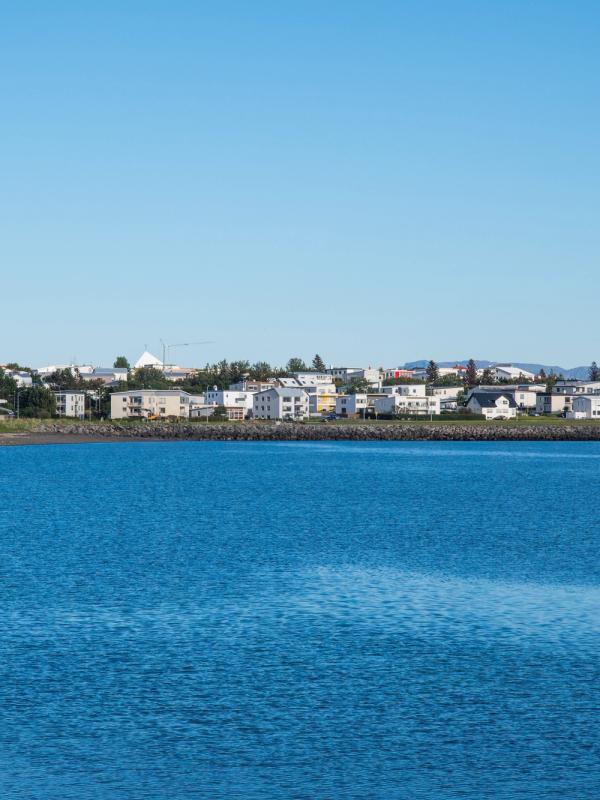
Seltjarnarnes Peninsula: Iceland's Coastal Gem Near Reykjavík
The Seltjarnarnes Peninsula doesn't usually make headlines in Iceland travel guides, but this small coastal area packs a punch. Just a short trip from Reykjavík, you'll find beautiful ocean views, important historical sites, and a perfect mix of nature and culture without the crowds that flock to Iceland's famous spots.
Key Takeaways
- Seltjarnarnes is Iceland's smallest municipality but most densely populated
- Located just 5 km west of Reykjavík, making it an easy day trip
- Home to Grótta Lighthouse, a great spot for Northern Lights viewing
- Summer is best for outdoor activities, winter for seeing the aurora
- Dress in waterproof, windproof layers—coastal weather changes quickly
- Main attractions include bird sanctuary, hot pools, and historical museums
- Easy to reach by bus, taxi, or even on foot from Reykjavík
What's Seltjarnarnes?
Seltjarnarnes is a small town on a peninsula west of Reykjavík. It covers just 2 square kilometers but houses around 4,600 people, making it the smallest township in Iceland by area yet the most crowded municipality in the country.
The peninsula extends into Faxaflói Bay, offering stunning coastlines and breathtaking ocean views. It's so compact you can see most of its attractions in a day, though you might want to stay longer once you discover how nice it is.
Formation, History & Facts
Geologically speaking, Seltjarnarnes is part of the Reykjanes Peninsula, which is shaped by the volcanic activity found in Iceland. The area features basaltic lava flows with the highest point, Valhúsahæð, reaching 31 meters above sea level. Look closely and you'll spot diverse geological features, including basalt lava layers and glacial striae from the Weichselian glacial period.
Historically, Seltjarnarnes was one of Iceland's earliest settled areas. It originally included much of what later became Reykjavík before formally becoming a separate municipality in 1947 and gaining town status in 1974.
Some interesting facts about Seltjarnarnes:
- In 2007, it became the world's first town to provide fiber optic access to all citizens
- The area hosts over 100 bird species, making it a birdwatcher's paradise
- Nesstofa, built between 1760 and 1765, is one of Iceland's oldest stone houses
- The Grótta football and handball teams are locally famous
- The highest point is only 31 meters above sea level
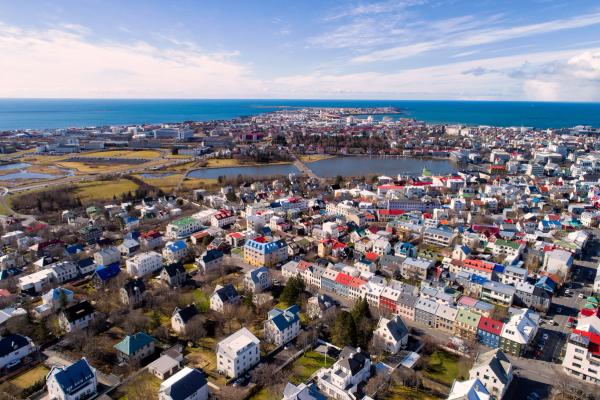
Why is Seltjarnarnes Worth Visiting?
Seltjarnarnes offers a mix of natural beauty and history without the tourist crowds. Its closeness to Reykjavík makes it perfect for travelers wanting to escape the city but not go too far.
The peninsula gives you amazing views of the ocean, mountains, and Reykjavík skyline. It's one of the best places near the capital to see the Northern Lights in winter, with less light pollution than downtown.
Bird lovers will enjoy the many species at Bakkatjörn pond, while history buffs can check out Nesstofa and the Pharmacy Museum. For relaxation, you have two different options, one natural and one where you can talk with locals (we’ll check both later).
I think that the best thing about Seltjarnarnes is that it gives you a taste of Icelandic coastal life just minutes away from the capital. You get beautiful nature, historical sites, and local culture without the long drives needed for many Iceland attractions.
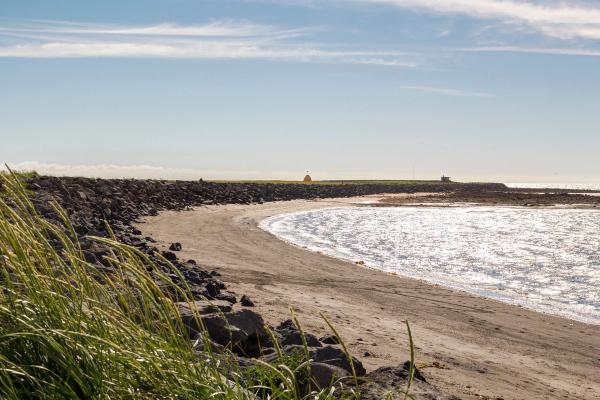
Location & How to Get There
Seltjarnarnes is situated approximately 5 kilometers west of central Reykjavík. Getting there is quick and easy, making it one of the most accessible day trips from Iceland's capital.
Here's how to reach Seltjarnarnes:
By Bus: Buses 1 and 11 from downtown Reykjavík take about 20-30 minutes. Tickets cost just a few dollars, making this the cheapest option.
By Taxi: A quick 9-10 minute ride from Reykjavík, perfect if you're short on time. You'll pay regular Reykjavík taxi rates.
On Foot or Bicycle: If you're staying in western Reykjavík, walking or biking to Seltjarnarnes is doable. The coastal paths offer a scenic trip, taking approximately 45-60 minutes to walk from central Reykjavík.
Once in Seltjarnarnes, the peninsula is small enough to explore by walking. Most attractions are close to each other, and the coastal paths link all the main spots.
Weather & Best Time to Visit
Like most of Iceland, Seltjarnarnes has cool temperatures year-round and weather that changes often. Being on the coast means it's usually windy, which can make it feel colder than what the thermometer says.
Summer (June to August): Days are long, with temperatures ranging from 45°F to 55°F (7-13°C). This is ideal for hiking, bird-watching, and other outdoor activities. The almost 24 hours of daylight in June let you explore late into the evening.
Winter (December to February): Temperatures typically range from 25°F to 30°F (- 4 °C to -1°C). While colder, winter offers chances to see the Northern Lights from September through March. The lighthouse area is especially good for aurora viewing away from city lights.
Spring (April to May) and Fall (September to October) have fewer tourists, but the weather, although better than in winter, is still quite unpredictable. Spring is an excellent time for bird watching as birds return, but please note that Grótta Island is closed from May to mid-July to protect nesting birds.
The best time to visit depends on what you want to do:
- For outdoor activities and warmer weather: June to August
- For Northern Lights viewing: September to March
- For fewer crowds but okay weather: May or September
- For bird watching: April to early May or August to September
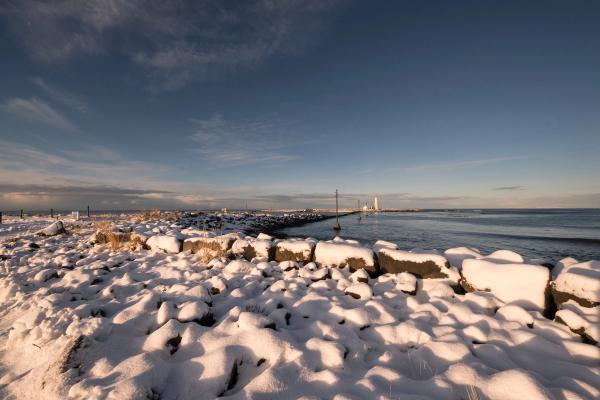
What to Wear & Bring When Visiting
Iceland's changing weather means dressing in layers is key, especially in coastal areas like Seltjarnarnes, where wind can pick up quickly.
- Base Layer: Wear fabrics that keep sweat away from your skin, like merino wool or synthetic materials.
- Mid Layer: Add a warm layer such as a fleece or wool sweater.
- Outer Layer: A waterproof and windproof jacket is a must, as coastal areas get hit with weather from the Atlantic.
- Footwear: Strong, waterproof shoes or hiking boots with good grip work best, especially for coastal paths, which can be wet and uneven.
- Accessories: Bring a hat, gloves, and a scarf even in summer. Sunglasses and sunscreen matter year-round, as UV rays can be strong even on cloudy days.
- For Swimming: If you plan to visit the hot pool, pack a swimsuit and a towel. Remember that in Icelandic pools, you must shower without a swimsuit before getting in the water.
Other Essentials:
- Camera for Northern Lights and coastal views
- Binoculars for bird watching
- Water bottle
- Small backpack for carrying layers and snacks
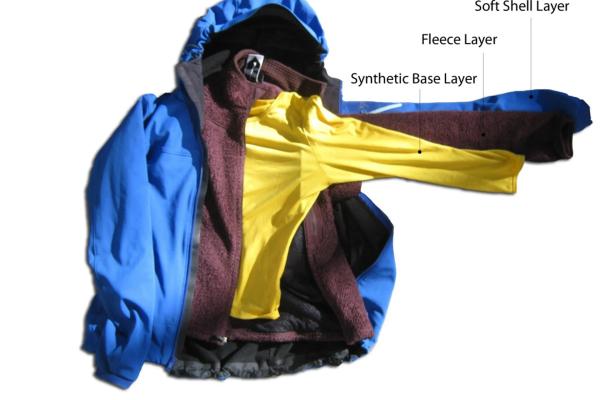
Things to Do in Seltjarnarnes
Seltjarnarnes packs several good attractions into its small area:
1. Grótta Lighthouse
This iconic lighthouse sits on a small island connected to the mainland by a path that's accessible during low tide. Built in 1897 and rebuilt in 1947, it offers amazing views of the ocean, mountains, and Reykjavík.
The lighthouse area is perfect for:
- Watching beautiful sunsets over the ocean
- Northern Lights viewing in winter
- Taking great photos
- Bird watching in surrounding areas
Check tide times before visiting, as the path goes underwater during high tide. The island closes from May to mid-July to protect nesting birds, but you can still see it from the mainland.
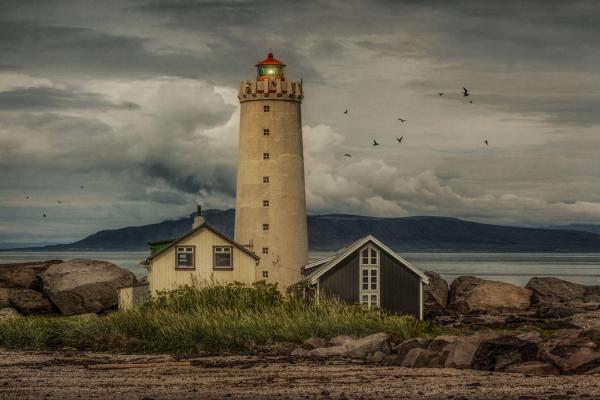
2. Birdwatching at Bakkatjörn Pond
This coastal pond is a paradise for bird lovers, with over 100 species including Arctic terns, eiders, and various geese. The pond and surrounding wetlands form part of the Grótta Nature Reserve.
Spring brings migratory birds to nest, creating a lively atmosphere, though you can watch birds year-round. Early mornings or late afternoons offer the best bird activity. Bring binoculars and stay on marked paths to avoid disturbing the wildlife.
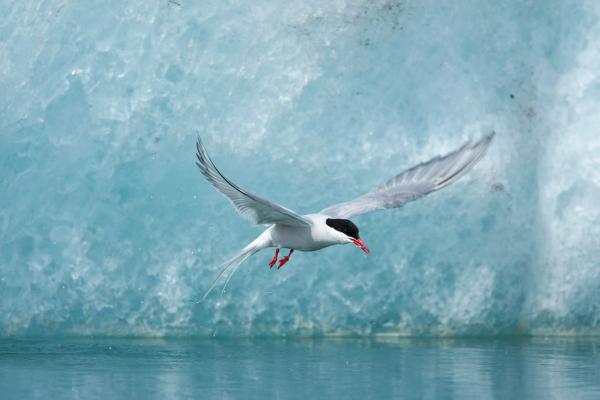
3. Kvika Footbath
The Kvika Footbath (also known as Cupstone) is a small geothermal art installation created by Icelandic artist Ólöf Nordal. Located near Grótta Lighthouse, this hollowed-out dolomite stone pool is filled with warm geothermal water at approximately 102°F (39 °C).
This intimate footbath, also known as "Magma" (which is what Kvika means in Icelandic), is approximately 25-30 cm deep and 80-90 cm wide. It's fed by a nearby borehole and offers a perfect spot to rest and warm your feet while enjoying stunning views of the Atlantic Ocean, Esja Mountain, and the Snæfellsjökull Glacier.
To find it, look for a small pool tucked behind a shark-curing shed near the lighthouse. It's free to use and doesn't require reservations, but bring a towel to dry your feet afterward. The pool is only big enough for a few people at once, so you might need to wait your turn during peak times.
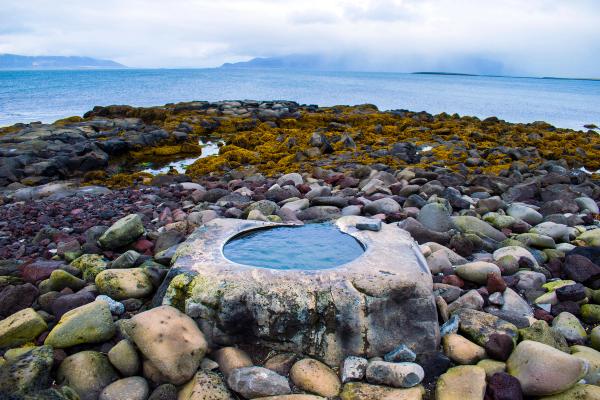
4. Seltjarnarnes Peninsula Jogging Path
A well-kept coastal path circles much of the peninsula, offering stunning views along its 5-7 km length. This flat trail is ideal for running, walking, or cycling, offering a chance to enjoy the fresh sea air and dramatic scenery.
The path gives excellent views of the ocean, Reykjavík's skyline, and the surrounding mountains. Benches along the way let you rest and enjoy the views. Consider timing your walk for sunset for especially beautiful lighting.
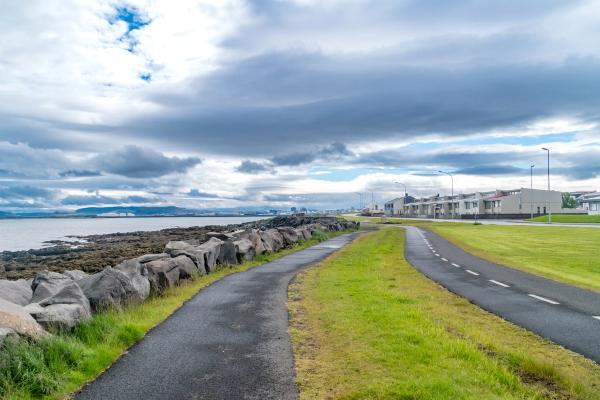
5. Nesstofa Medical History Museum and Pharmacy Museum
Nesstofa, one of Iceland's oldest stone houses (built 1760-1765), was originally the home of Iceland's first Director of Public Health. Today, it houses an interesting medical history museum, while the building next door is home to the Pharmacy Museum.
These small but fascinating museums showcase Iceland's medical history through artifacts and exhibits. The well-preserved historical buildings are worth seeing in their own right. Check opening hours before visiting, as they change with the seasons.
6. Seltjarnarneslaug Geothermal Pool
This modern swimming complex has a 25-meter outdoor pool, hot tubs of different temperatures, a children's pool, and saunas, all heated by Iceland's natural hot water.
Swimming in geothermal pools is a classic Icelandic experience. The mineral-rich waters help you relax and offer therapeutic benefits with ocean views. Remember that showering before entering is required, and admission is cheap (typically 1,000-1,500 ISK for adults).
7. Nesklúbburinn Golf Club
The 9-hole golf course lets you play with the Atlantic Ocean as your backdrop. Established in 1965, it is one of Iceland's oldest courses, and has challenging sea breezes that make your game more unique.
Summer visitors can take advantage of Iceland's midnight sun to play late into the evening. Club rentals are available, though booking tee times ahead is recommended during busy season.
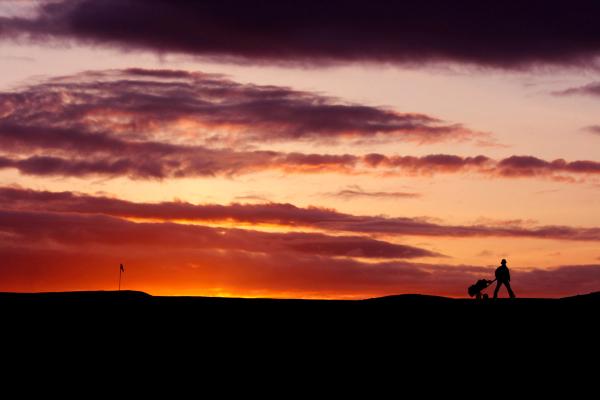
8. Seltjarnarneskirkja
This modern Lutheran church is situated on a hill, offering stunning views of Reykjavík and the bay. Built in 1989, its sleek design stands out from traditional Icelandic churches.
The church's high location makes it a good photo spot and viewpoint. Check for occasional concerts or community events that might make your visit even better.
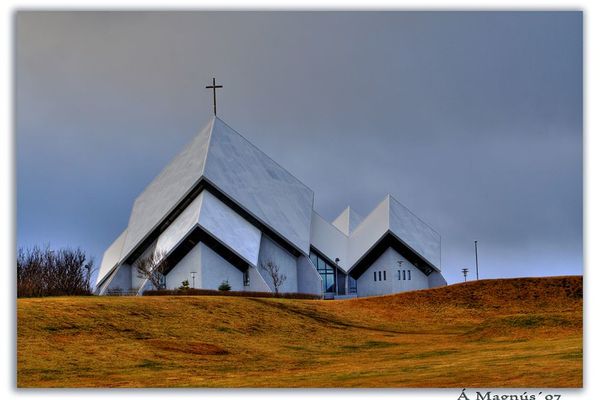
Conclusion
Seltjarnarnes Peninsula packs diverse experiences into its small area. From the iconic Grótta Lighthouse to bird watching spots, historical museums, and relaxing hot pools, there's something for everyone.
Its closeness to Reykjavík makes it perfect for those with limited time in Iceland or travelers wanting to experience local coastal life without going far from the capital. The peninsula offers a taste of what makes Iceland special – beautiful nature, rich history, and unique cultural experiences – all within a compact, easy-to-reach area.
